People are friendly and above all very relaxed, with a very accentuated rural atmosphere. Many people have boats or caravans and take advantage of weekends or holidays to get lost somewhere with good fishing.
The North Island has more Maori population and areas of volcanic activity than there are on the South Island, especially in the Rotorua area, the White Island in Whakatane and the Tongariro National Park, which is wonderful, with the Ruapehu volcano of almost 2900 meters, the Ngauruohe and the classic hike Tongariro Northern circuit. It also has interesting coastal areas, such as Northland and Coromandel, and the Taranaki volcano.
The South Island has everything but big cities: incredible mountains, fjords, lakes of all colours and a coastline full of wildlife.
I enclose a map with the favourite places of Yep Yep Yep:
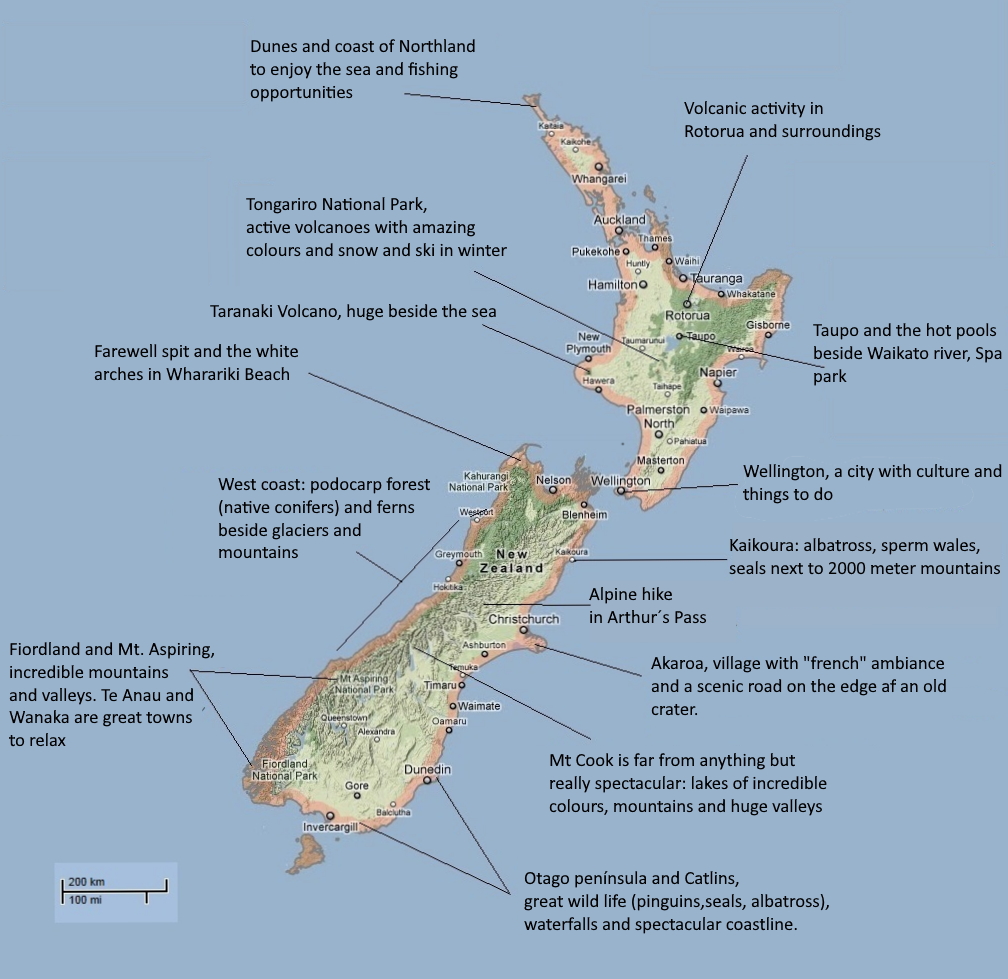
Map of New Zealand
Prices
Transport
Public transport is quite limited and does not reach isolated places. Many people hitchhike, it´s quite easy and good option if you have time.
The main bus companies are Intercity and Atomic. There are also companies that offer a bit more expensive transport packages that allow you to meet people and get on and off the bus where you want, such as Stray Bus, Magic New Zealand Bus and Kiwi Experience, the latter is ideal for young travellers looking to party.
The best option to travel independently and reach remote places (the country is full of unpaved roads) is to rent a car or a van (there are plenty of companies: backpackers, apollo, wicked, escape, Jucy, happy campers, hippie campers). And if you are travelling for a long time, buying a car (from $ 1,000) or a van (from about $ 3,000) would be the best option.
Many people use the Trade me or backpackersboard website, or you can also go to the boards of the main backpackers to buy directly from travellers who leave the country. Normally backpackers’ cars have mattresses, camping equipment, maps, etc … and they are like small mobile homes.
To change the vehicle documents, you will just need to go to the post office and fill out a form, it takes 5 minutes! If you buy a diesel car, you must pay taxes depending on the kilometres that the vehicle has, unlike gasoline cars.
The number of old cars running on the roads of New Zealand is incredible. To keep the car in order, you must pass the WOF (Warrant of fitness) every 6 months and pay the REGO (registration that allows the car to be in circulation) by post for the period you want to travel (between 3 months and one year).
For 9 months I think it costs about $ 150. It is important to buy a car in good shape and ask the owner what needed to be done in the last WOF, although there is always the risk of buying a car that is botched and fails after a short time. I had no problem with my Toyota Hiace, how wonderful!
Driving in New Zeland
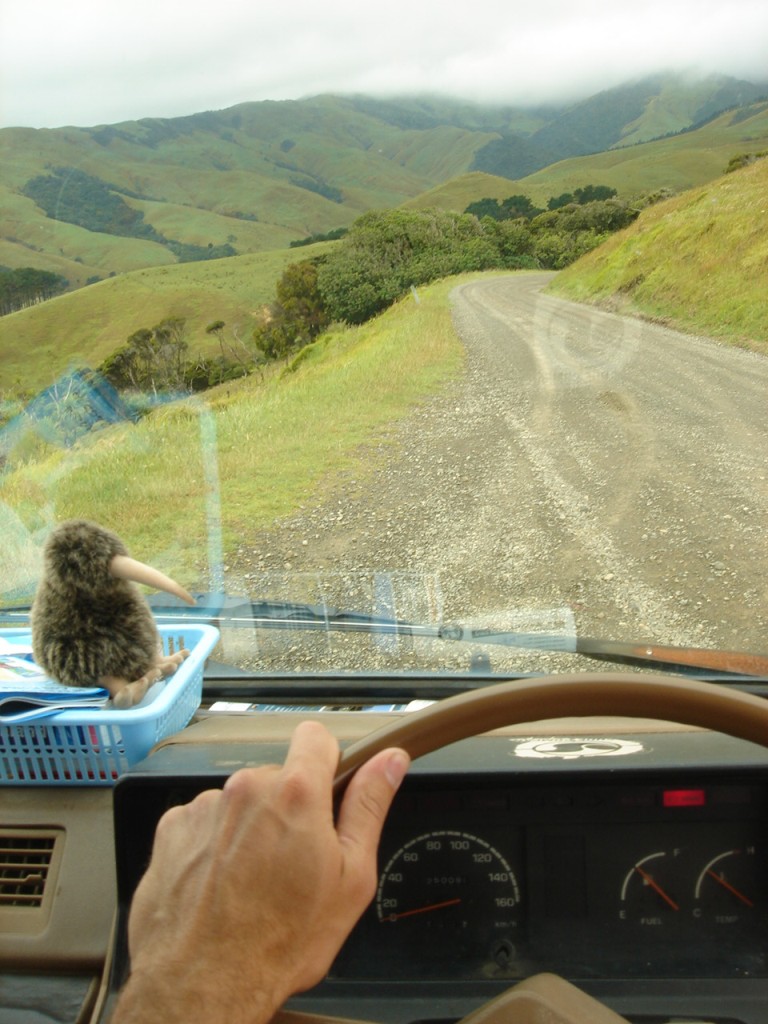
Driving with Stevie
Touristic information
The country is well prepared for tourism, with information centres that make it almost unnecessary to carry a guide.
There are I-sites in most large towns where you can book or pay hostels, tours, buses and other things, not necessarily from that place, but from all over the country. They make the necessary phone calls themselves or call whomever it takes to get information.
In the DOC offices (Department of Conservation), in the main towns and in all the natural parks, you can check everything that has to do with nature: prepared and friendly staff will help you buy hut tickets, maps and leaflets for short or long hikes.
Hiking and Tramping
The hut tickets cost between 5 and $ 15 and in the DOC offices you can buy the tickets to put inside a box in the hut
If you are travelling for a long time, it is worth buying the “annual pass” that allows you to sleep in many shelters and that costs $ 92 for 6 months or $ 122 for 1 year. There are huts where it can’t be used, like all the Great Walks shelters and a few others. The number of huts is incredible (over 950!), most in very good condition and with mattresses, and the trails are very well marked.
You can see the prices of the shelters and the annual pass here.
There are several books about hiking in NZ, such as “Weekend Tramps” by Nick Groves or “Tramping in New Zealand” by Jim Dufrosne. Yep Yep Yep’s opinion is that sometimes it is worth taking a look at the map and preparing your own itineraries, as some “tramps” run through the valleys and the beech forest landscape can get a little monotonous.
For example, the 1st day of the popular “Greenstone Track” goes along the valley inside the beech forest, and you almost spend the day in the middle of the trees with no view. If you go up to “Key Summit” and continue along the ridge until “peak 1531”, you can go down to Mc Kellar Hut (end of the first day) and although it is more tiring, you have incredible views. I attach photos with the conventional route (blue) and the variation (red).
It’s also good to do some popular trekkings or “great walks”, where is easy to meet other people, such as the Great Walk Abel Tasman, which is quite cheap in a tent and can be done by kayak, or the normal Rees-Dart hike through Cascade Saddle.
There are several mountain clubs that do courses and activities, but some of the little ones don’t work that well. The NZAC and CMC are two of the clubs that carry out activities regularly, and membership is worth $ 105 and $ 55 a year, respectively.
Camping
Normal private campsites cost between $ 12 and $ 20 per person and have good facilities: living rooms with tables and sofas and equipped kitchen with dishes, cutlery… Aside from commercial campsites, there is the DOC network of campsites, with prices ranging from $ 0 in isolated places without drinking water to $ 12, although most are worth about $ 6.
It was quite popular in the past to do freedom camping, i.e. camping wherever you want as long as there is a toilet nearby (in New Zealand there are toilets everywhere) or you have a toilet in the vehicle you are travelling in. Now it is difficult to find places to do freedom camping, although you can always find a suitable place if you are looking for a while or talking to other travellers.
Flora and fauna
New Zealand does not have dangerous animals or too many poisonous plants. Their animals are very peculiar and interesting. They have the only nocturnal and fattest parrot in the world (Kakapo), the only alpine parrot (the Kea, who loves to tear tents to see if there´s food inside), the kiwi, penguins (the yellow-eyed penguin is one of the most threatened in the world), seals and many others.
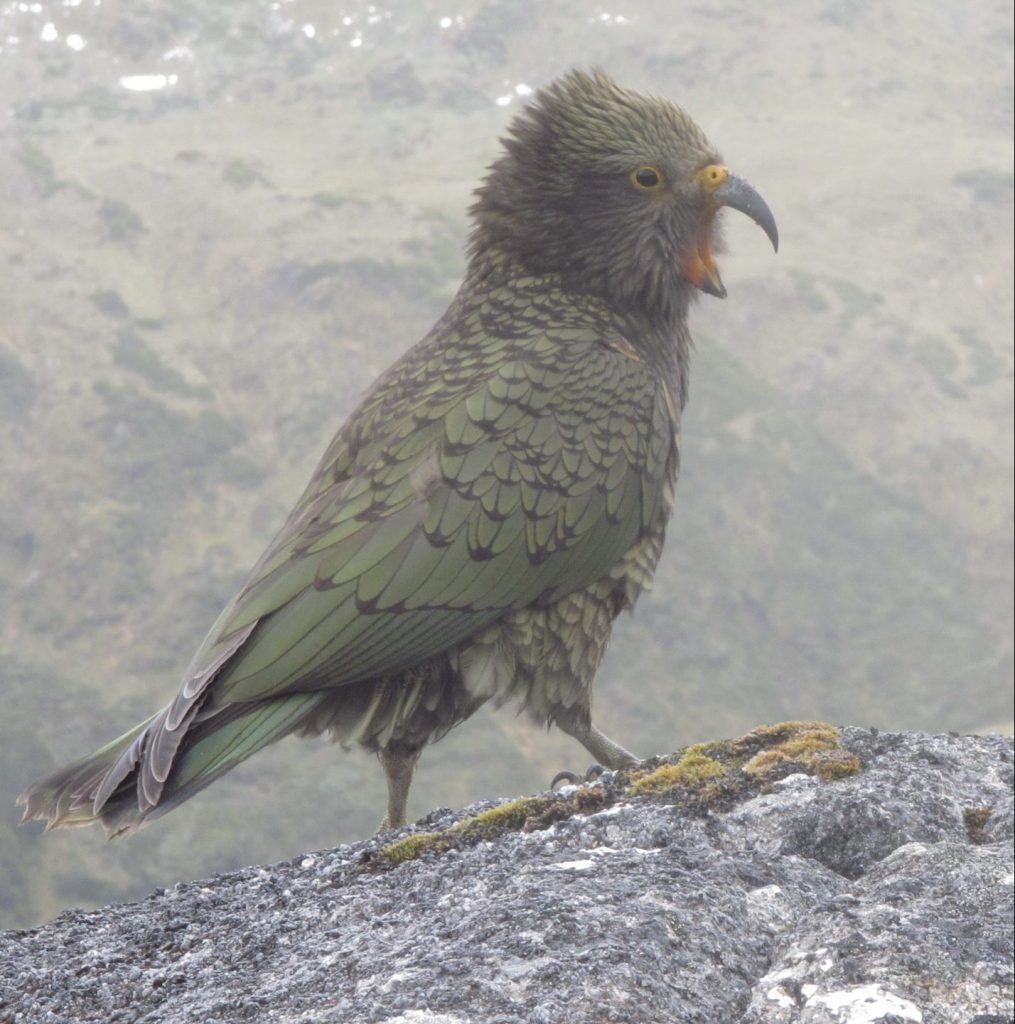
El Kea, the only alpine parrot in the world
In this video, you can see how smart is the Kea:
And one of my favourite videos of Kakapo:
The creation of New Zealand and its peculiar birds
200 million years ago Pangea split into Laurasia (what is now Europe, North America and Asia) and Gondwana (what is now South America, Africa and Oceania). Gondwana shared part of its organisms until it began to divide.
80 million years ago, New Zealand separated from Australia when dinosaurs dominated the land and mammals had not yet developed. A small marsupial that already lived in South America, some 60 million years ago, is believed to have migrated to Australia by crossing Antarctica.
According to this theory, New Zealand developed without mammals and birds occupied the niches that mammals would normally occupy. The 15-pound giant “Haast Eagle” would have taken the place of the lion, the Moa (like an ostrich but New Zealand style) the place of the giraffe, and small birds and insects the place of mice, creating a good range of bizarre birds, many of them nocturnal (to avoid the Haast Eagle).
Unique trees
As for the flora, even today the beech forests are related to the beech of South America (genus Nothofagus) and the Kauri (millennial trees) of New Zealand are from the araucaria family such as the South American “Arauco” or the Australian Bunya Pine.
Imported species
With the arrival of the Maori between AD 1000-1200, dogs and rats were introduced and interfered with the ecosystem. The Moa became extinct in the hands of the Maori around the 1800s and the forests of the southern island decreased considerably.
The arrival of Europeans in the 19th century led to the disappearance of much of the forest on the North Island, which was cut down to make boats and build houses, and a large number of animals were introduced: the Australian possum and stoats for fur, the rabbit, chamois, thar (a large, shaggy “goat” from the Himalayas) and deer for hunting, trout for fishing, cats, dogs, cows and sheep.
Many of these animals are considered a plague, since they compete and destroy native organisms, and it is allowed to hunt them. DOC does several operations to control these species, such as traps and the launching of thousands of balls with venom (TNT or 1080) that basically kill mammals. The use of the 1,080 is criticized by hunters and some ecologists for the side effects it can have on hunted animals and on the environment respectively.
Maori Pronunciation
Let´s learn four concepts for pronouncing some local names. Maori is quite easy to pronounce if you speak Spanish:
- The vowels are pronounced as in Spanish.
- “Wh” is pronounced as an “f”.
- “Ng” is often pronounced as “n”.
- The emphasis is often found on the first syllable.
You can practice pronunciation by singing the song E-Poi and for the bravest, you can try to pronounce the longest name of all the populations of NZ: Taumatawhakatangihangakoauauotamateaturipukakapikimaungahoronukupokaiwhenuakitanatahu!
It means “The summit where Tamatea, the man with big knees, mountain climber, the traveller who swallows land, who played the flute for his beloved.” Good luck! You can see if you did it right in this video!
The weather
New Zealand is in the middle of the ocean and receives a large number of fronts. Many of them come from the west and get stuck in the mountains and guarantee a few rainy days. This is the case of the West Coast and Fiordland.
It is worth taking a look at the metservice webpage. The 5-day rain forecast is quite useful (and then you can go somewhere where it does not rain) and also the weather forecast for the national parks. They update them at 8 and 12 each day. Anyway, I recommend a mental predisposition to be wet: New Zealanders cross rivers without taking off their shoes and go down rivers kayaking even if it rains!
Summers are cool, especially at night, and winters are mild except in mountain areas.
Visa
You can check the different kind of visas to travel to New Zealand here: https://www.immigration.govt.nz/new-zealand-visas
Safe travels!
Yep Yep Yep
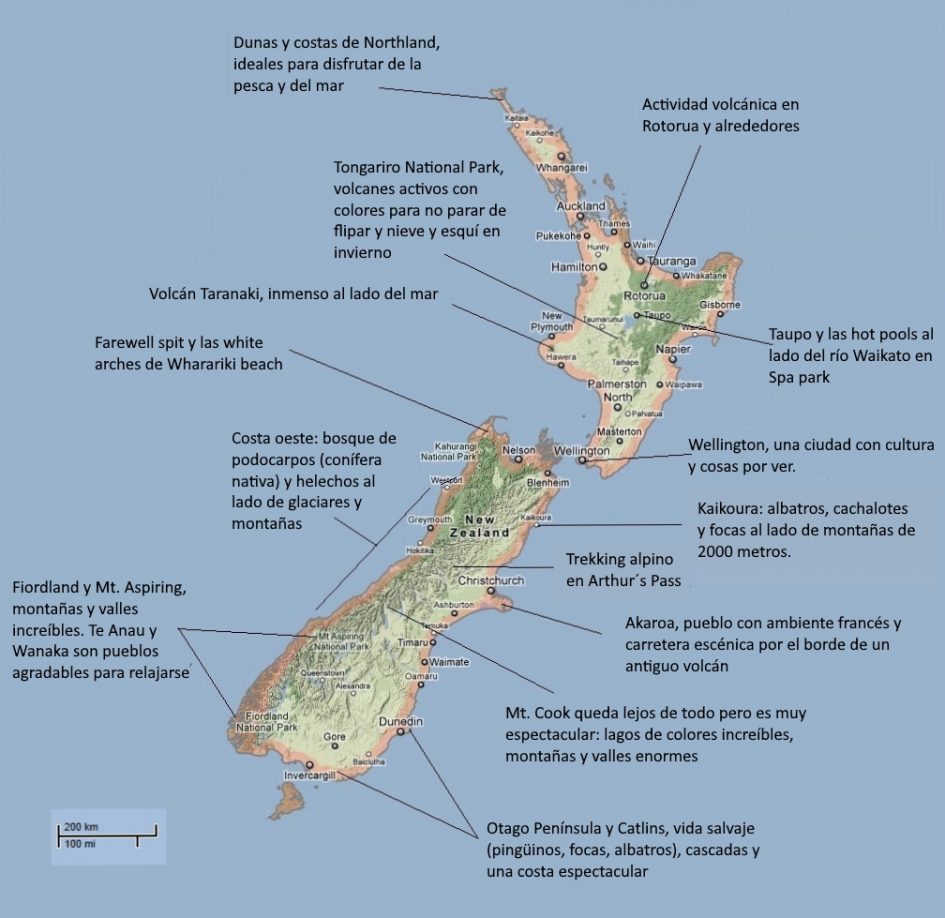
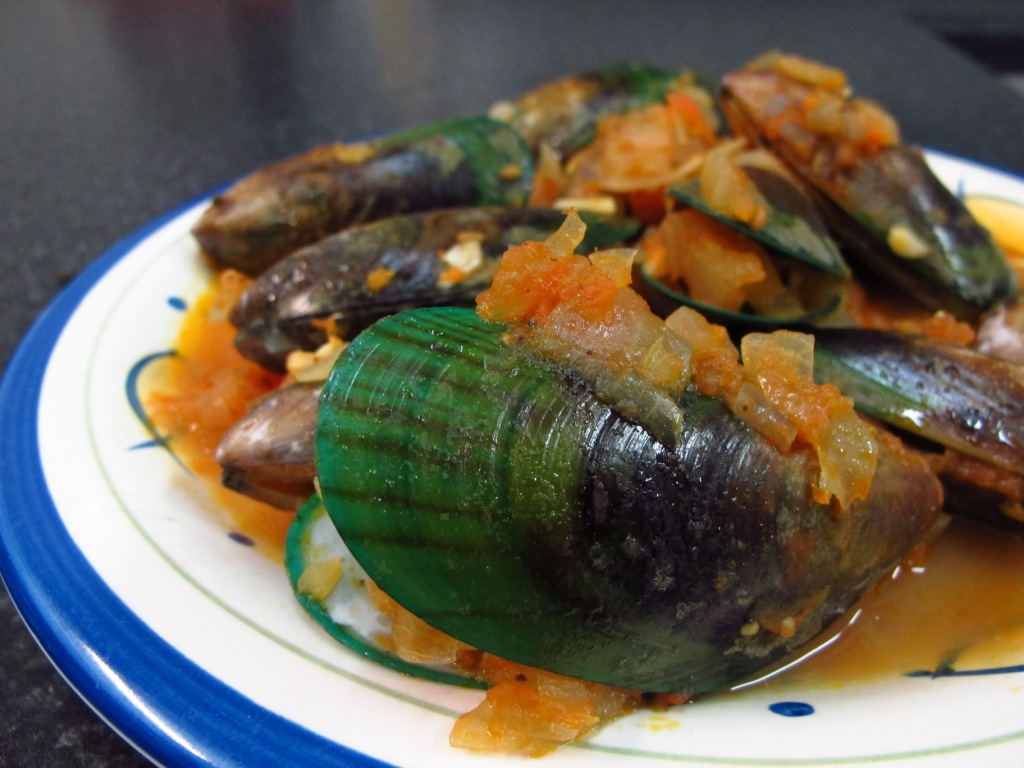
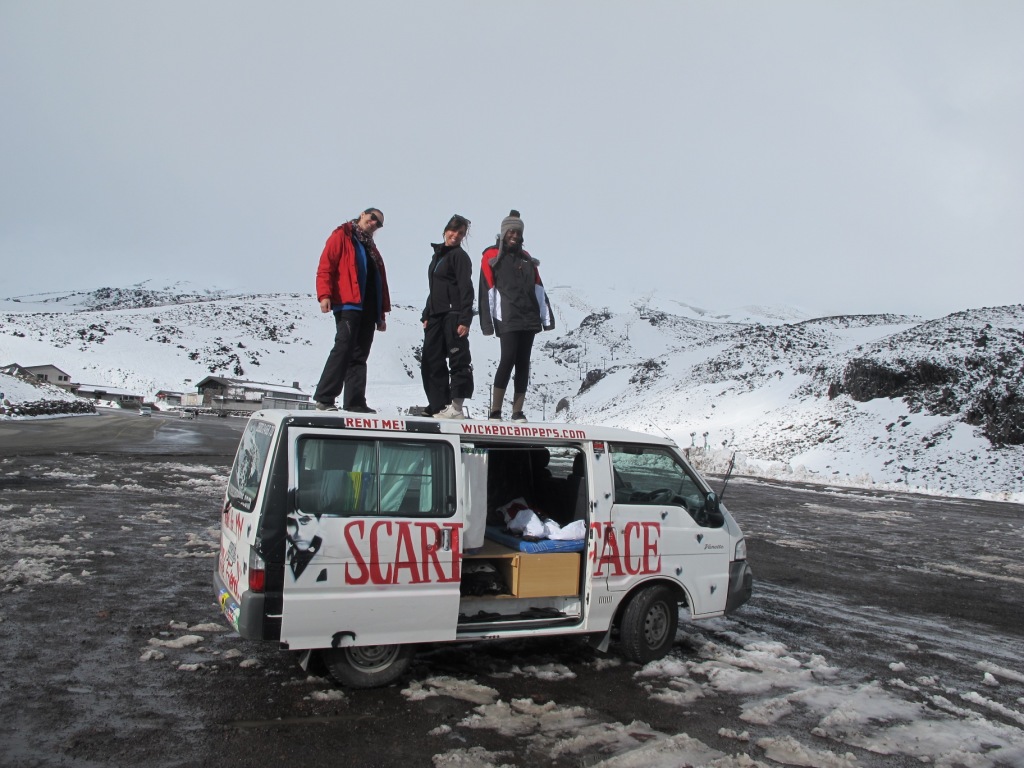
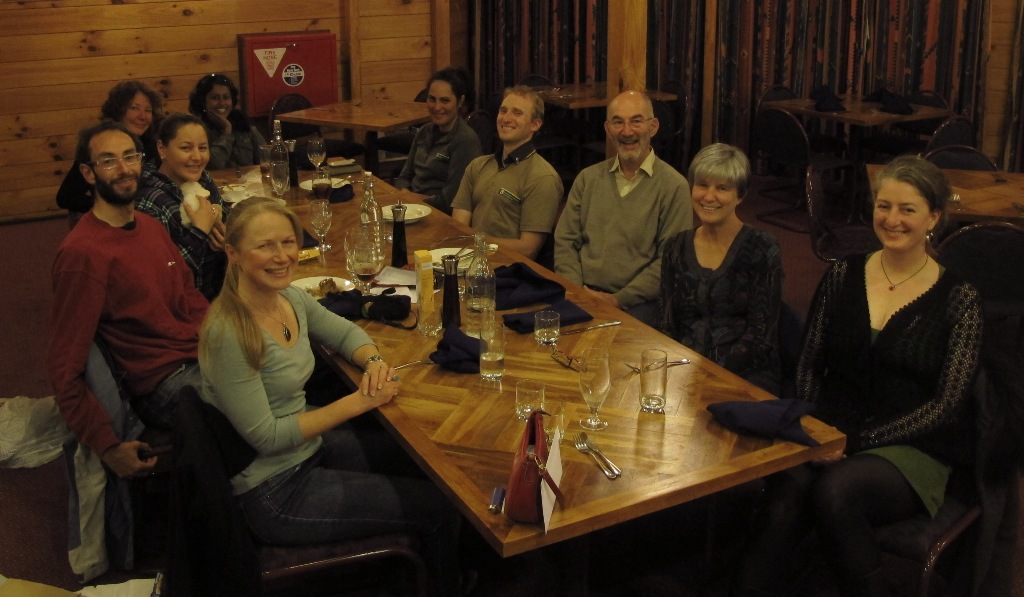
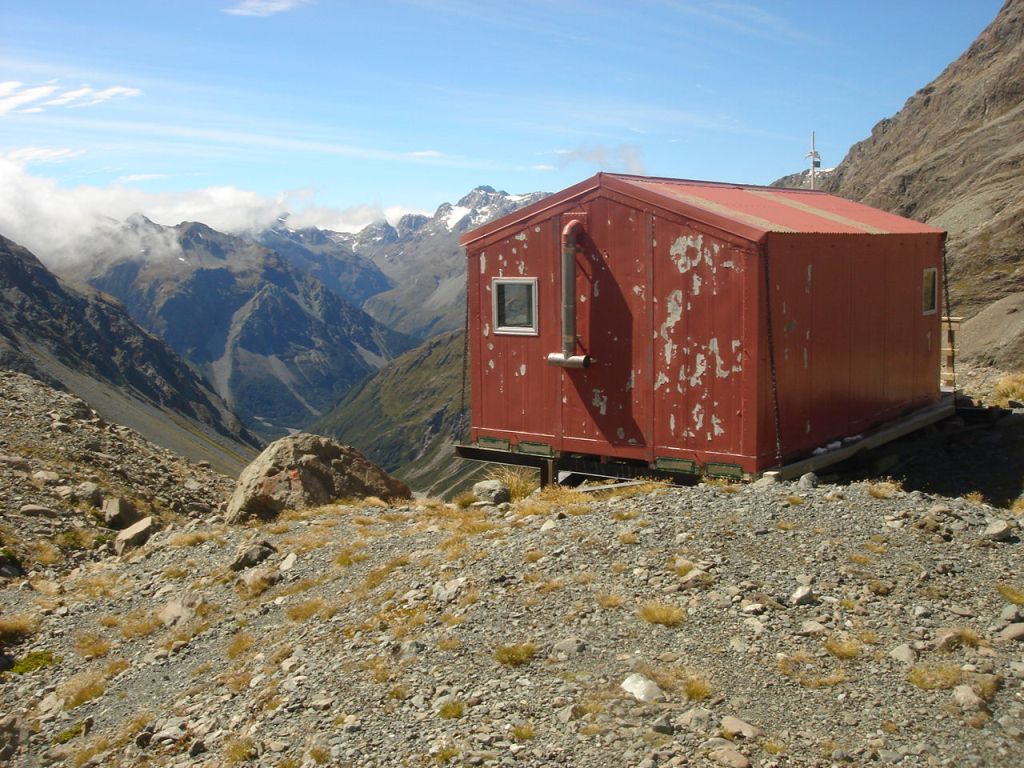
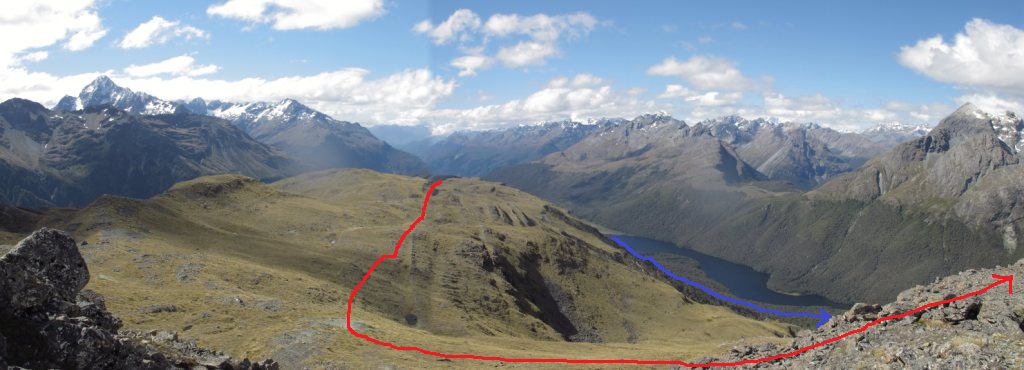
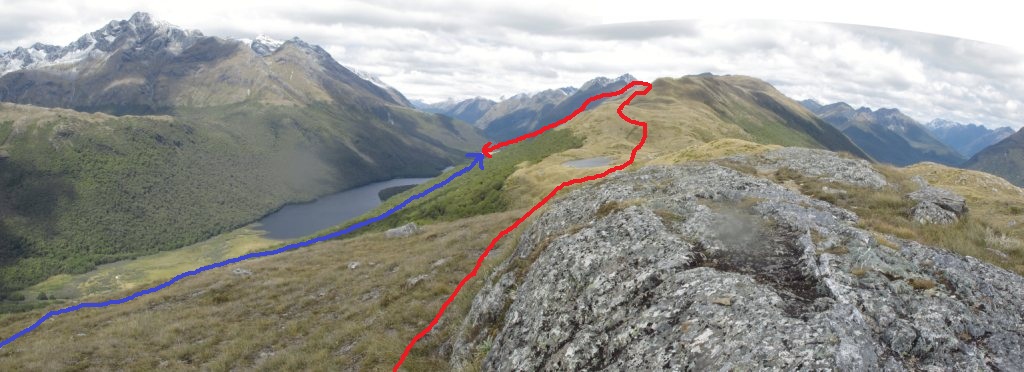
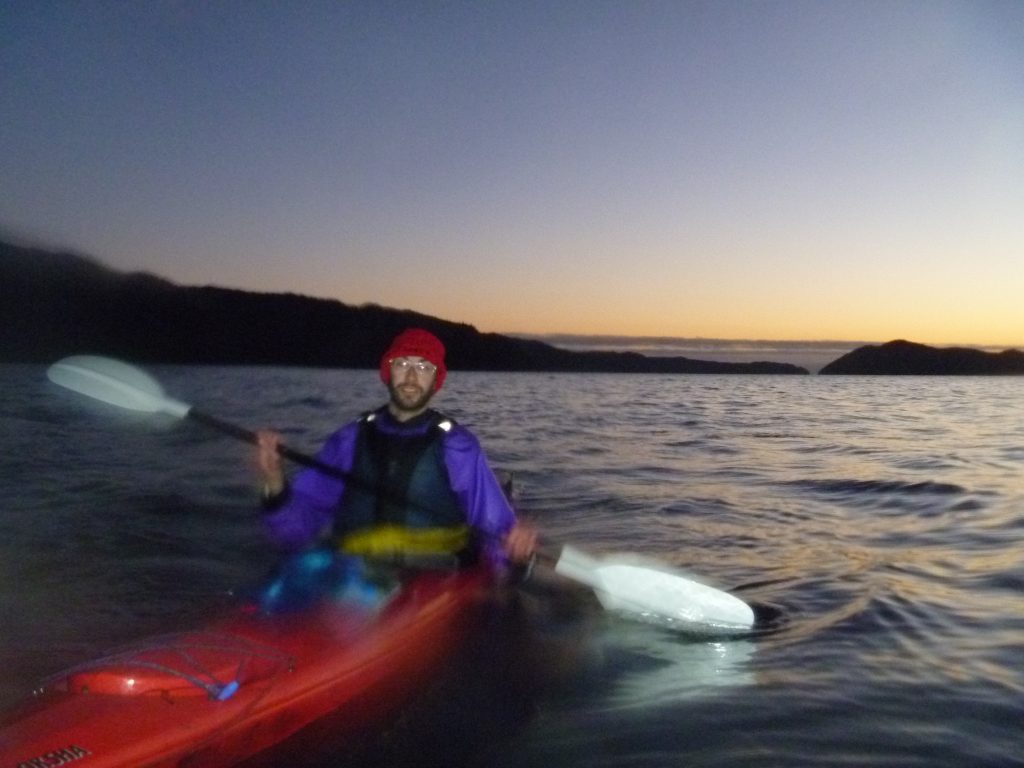
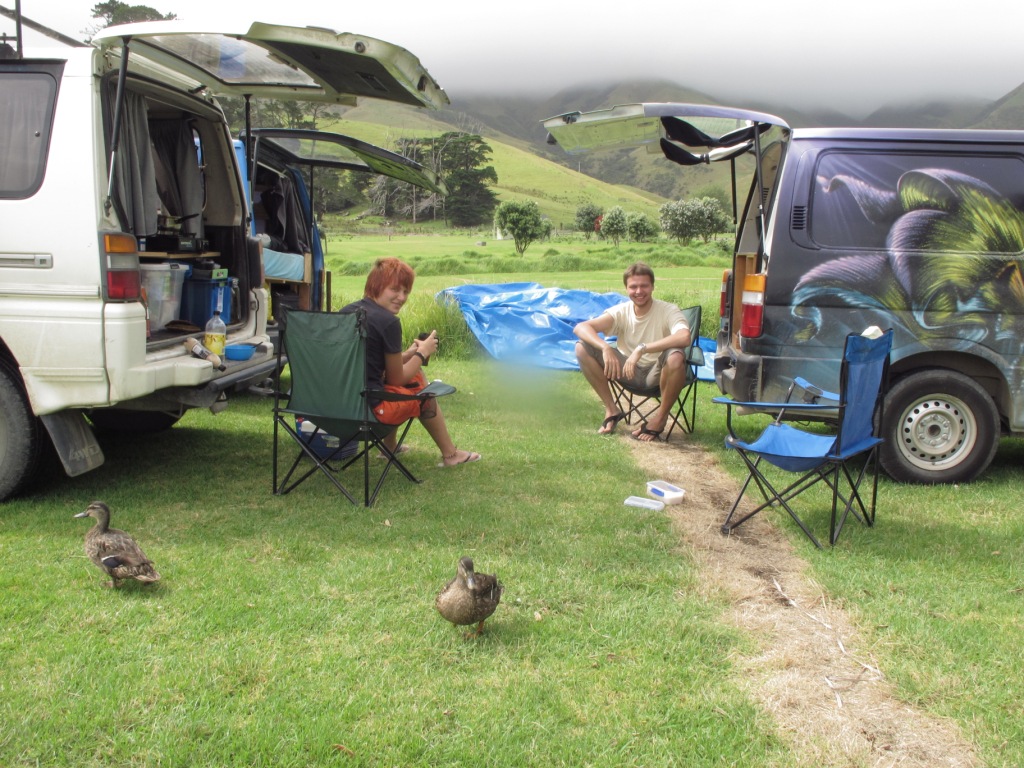
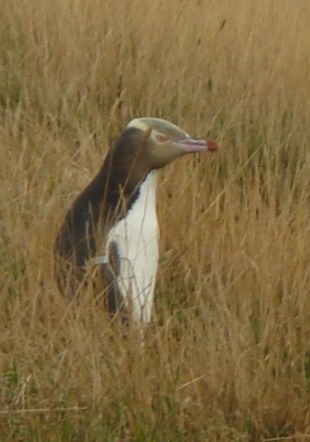
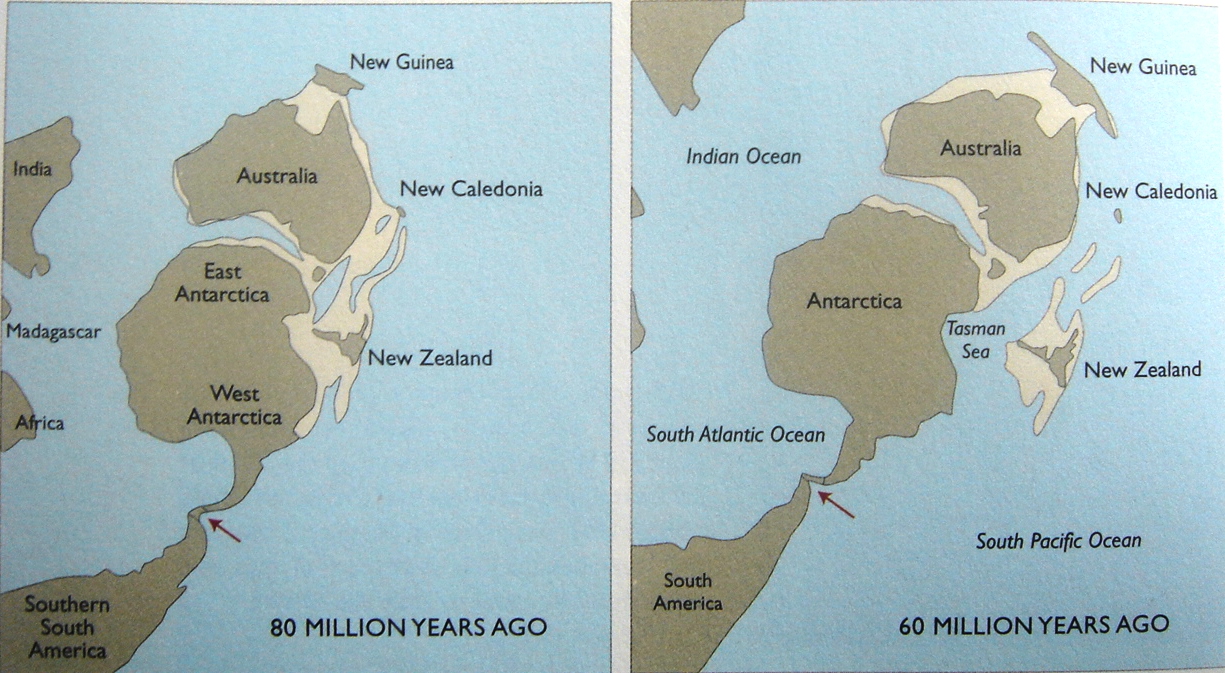
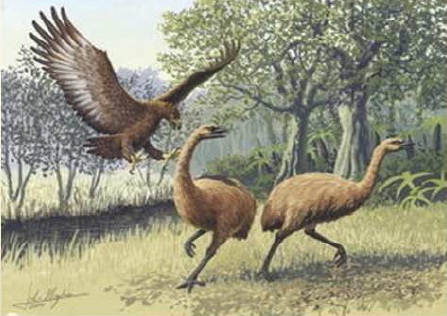
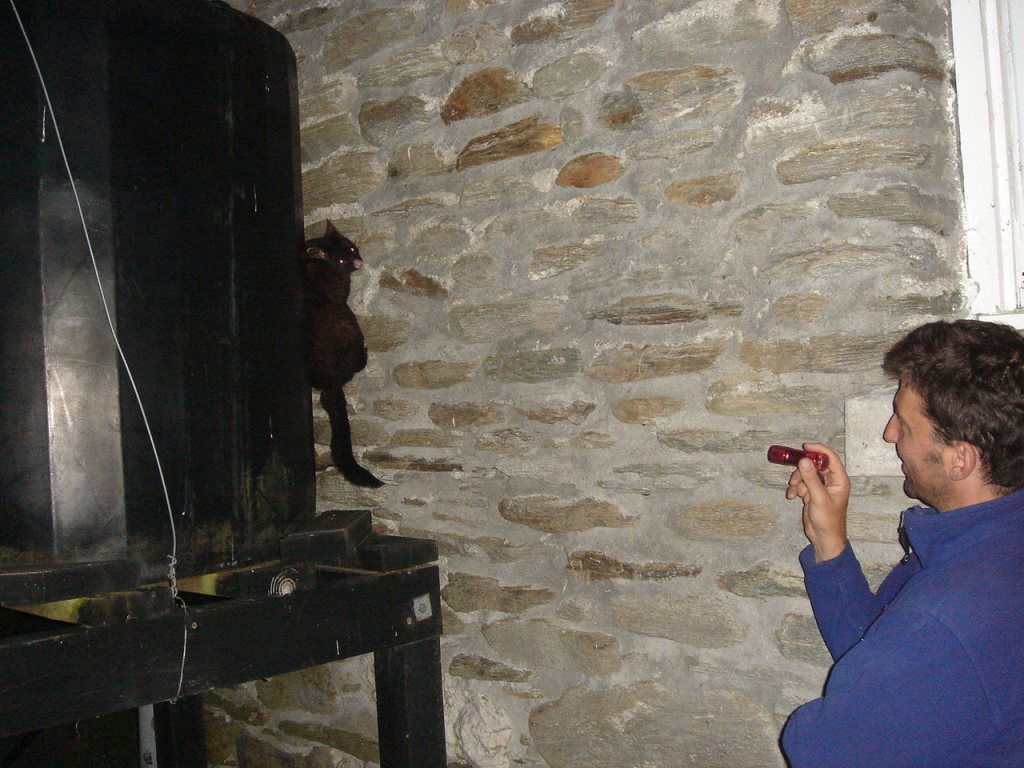

Leave a Reply